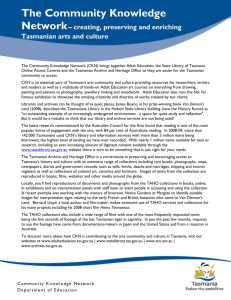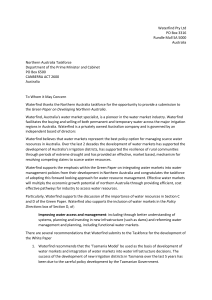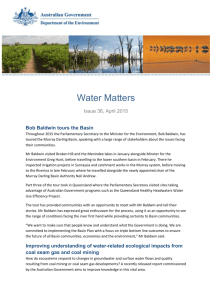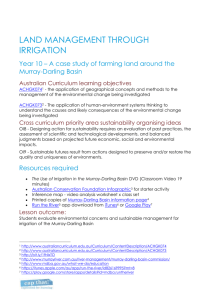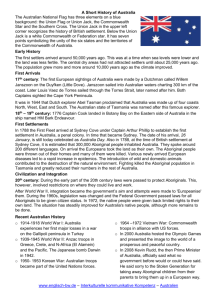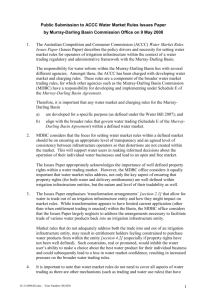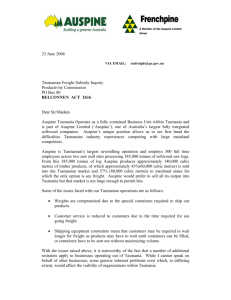Word - Agricultural Competitiveness White Paper
advertisement
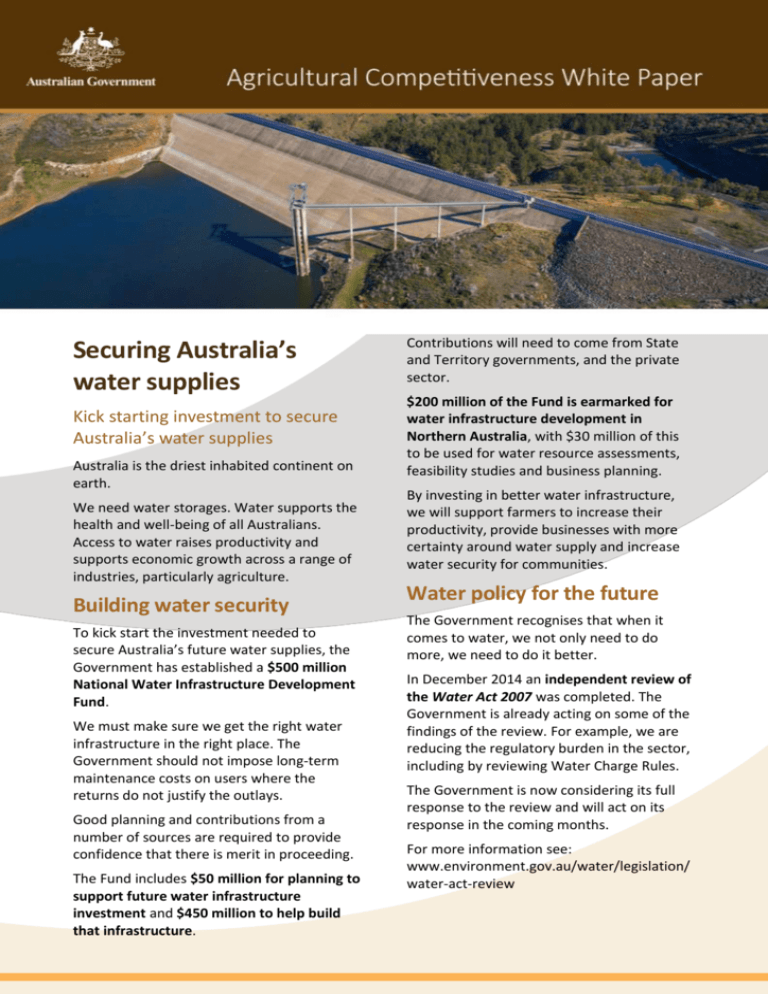
Securing Australia’s water supplies Kick starting investment to secure Australia’s water supplies Australia is the driest inhabited continent on earth. We need water storages. Water supports the health and well-being of all Australians. Access to water raises productivity and supports economic growth across a range of industries, particularly agriculture. Building water security To kick start the investment needed to secure Australia’s future water supplies, the Government has established a $500 million National Water Infrastructure Development Fund. We must make sure we get the right water infrastructure in the right place. The Government should not impose long-term maintenance costs on users where the returns do not justify the outlays. Good planning and contributions from a number of sources are required to provide confidence that there is merit in proceeding. The Fund includes $50 million for planning to support future water infrastructure investment and $450 million to help build that infrastructure. Contributions will need to come from State and Territory governments, and the private sector. $200 million of the Fund is earmarked for water infrastructure development in Northern Australia, with $30 million of this to be used for water resource assessments, feasibility studies and business planning. By investing in better water infrastructure, we will support farmers to increase their productivity, provide businesses with more certainty around water supply and increase water security for communities. Water policy for the future The Government recognises that when it comes to water, we not only need to do more, we need to do it better. In December 2014 an independent review of the Water Act 2007 was completed. The Government is already acting on some of the findings of the review. For example, we are reducing the regulatory burden in the sector, including by reviewing Water Charge Rules. The Government is now considering its full response to the review and will act on its response in the coming months. For more information see: www.environment.gov.au/water/legislation/ water-act-review Agricultural Competitiveness White Paper What are we already doing? The Commonwealth has committed almost $13 billion in the Murray-Darling Basin Plan – the largest investment in irrigation infrastructure in Australia’s history. The investments include: $3.2 billion for state priority projects; $575 million in on-farm irrigation infrastructure in the southern MurrayDarling Basin; $180 million to improve the operation of the Menindee Lakes; and $18.1 million towards an upgrade of Chaffey Dam. Outside the Murray-Darling Basin the Commonwealth is investing: $200 million for irrigation projects in Tasmania to improve productivity and jobs in agriculture; and almost $16 million for the Great Artesian Basin Sustainability Initiative phase 4, on top of the $112 million already invested, to support critical infrastructure. Collaborative investment in Tasmanian irrigation Water infrastructure investment in Tasmania is a good example of a public–private partnership investment model. Under this model the Commonwealth, the Tasmanian government and the private sector jointly fund the capital works of new irrigation schemes. Private investment is raised through irrigators purchasing newly-created water access entitlements, the value of which is created by the water security produced by the new dams and associated works. Farmers also make substantial on-farm investment to take advantage of the schemes. Under the Supporting More Efficient Irrigation in Tasmania programme the Commonwealth provided $140 million in funding, the Tasmanian government $80 million and private investors $80.47 million. Under the Tasmanian Tranche II project the Commonwealth has committed $60 million and the Tasmanian Government $30 million. Private investment is estimated at approximately $27.12 million. Water infrastructure investment in Tasmania is market-driven, which results in developments that are focused on growing Tasmania’s productive capacity. It’s about getting water where it is most needed and most valued, not about creating a burden for the future. The co-planning approach has provided private investors with confidence to make substantial on-farm investments. Further Information agwhitepaper.agriculture.gov.au
